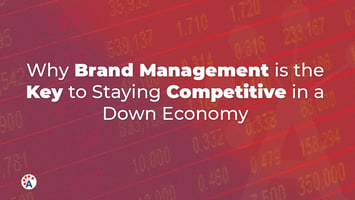As we pass by the mid-year mark, businesses and business professionals around the world and across...
Brand Manager or Product Manager?
There is a discussion that often happens among marketing people: How are great brands built?
First, let’s define what a brand is: “An Identifying mark, label, trademark, imprint, or name that distinguishes the originator, creator, or manufacturer of a product or service.”
The components that build Brand Equity are:
- Brand Awareness: the degree to which consumers recognize a product by its name and have positive perceptions of it.
- Brand Image: The consumer's interpretation of your company, its products and services, based on their experiences and perceptions.
“A strong brand can only be created by a visionary, skillful marketer”
“It all starts with a brand name that is memorable, unique, powerful”
“The brand is treated as a company asset, nurtured and subjected to constant monitoring”
Although all above are right, the true origin of great brands is seldom mentioned:
“All great brands start with a great product that catapults them to fame.”
Nike started to become Nike in 1973, when Bill Bowerman’s invention of the waffle-sole patented technology created running shoes that provided unmatched grip and lightness. It was truly a breakthrough.

The beginning of a brand: the Nike Waffle Shoe
After the Waffle, Nike created new shoes maintaining the high-tech, innovation-driven approach, strengthening the brand: the Air technology, the Micropacer, the Air Jordans, the Vaporfly.
Nike became a great brand, with a “meaning” and such awareness that the “swoosh” mark is enough for people to recall the brand – no need to write Nike.
When a brand becomes strong enough, it can support the launch of “regular” products and transfer prestige to them. Think of Nike socks. They are by no means remarkable but there are plenty of people who prefer to buy Nike socks than plain, generic ones.
Apple also started with a great product – the Macintosh and innovations like the mouse technology (although my theory is that the iPod and the opening of the Apple Stores were the inflexion point).
I like to compare the product to a seed from which a “brand-tree” grows. If the “brand-tree” gets robust enough, it can bear fruits – new, successful products. A bad “product-seed” will produce a weak “brand-tree” which can’t bear fruit.
Can a product kill a brand? Definitely, if it fails to honor its heritage or loses touch with customers.
In the 80’s Sony was the paramount of innovation: the Trinitron color TV, the Betamax video player, the Walkman, the CD player, the Minidisc. In the year 2000, Sony was among the top 20 most valuable brands in the world.
At the time, Samsung, was nowhere, with negligible brand value. Samsung’s drive toward innovation over the years projected the brand to the forefront – it stole Sony’s positioning. Samsung, in 2024 has a brand value of US$ 90 billion, 4-times higher than Sony. According to Interbrand, Samsung is now the fifth most valuable brand in the world, after Apple, Microsoft, Amazon, and Google.
What happened to Sony as a brand? It lost its innovative edge and diversified over too many different markets: entertainment, music, finance, movies, semiconductors, gaming. The brand´s image was diluted, and the positioning lost orientation, leaving people wondering “what´s Sony really great at?” Samsung occupied the position left by Sony – it is all about cutting-edge electronics – a clear, crisp brand positioning.
All this product & brand dynamic begs the question: which is more important Product Management or Brand Management?
We have concluded that all great brands start with a great product.
Does that mean Product Management is more important than Brand Management?
Well, that´s not the case.
After the company created a product portfolio under a brand’s umbrella, Brand Management is crucial. The function must ensure coherence within the brand image, it must guarantee all Product Managers’ efforts are aligned with the brand, and very importantly, define whether a new product will strengthen the brand or weaken it. Low-priced Armani apparel could have killed the brand. Instead, they created Armani Exchange, which took advantage of the brand cachet but set it apart from its rich cousin Armani.
The conclusion: Brand Management is as important as Product Management. One cannot exist without the other.
Our advice: become an expert in both Product Management & Brand Management. You need both to develop into an extraordinary marketing professional.



